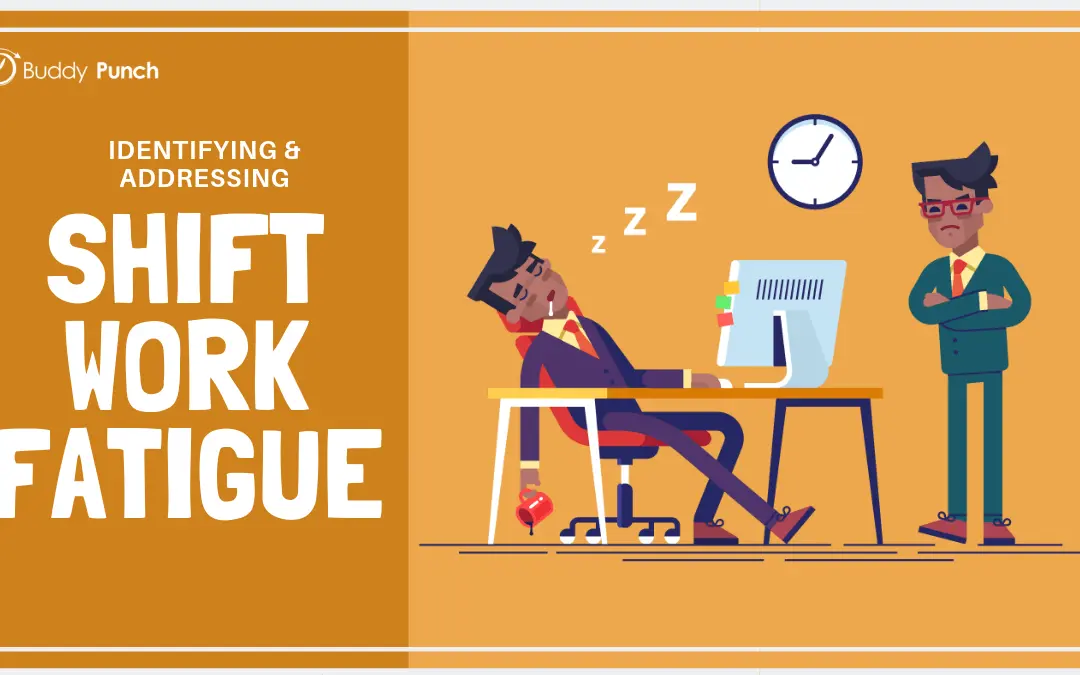Identifying and Addressing Shift Work Fatigue

More and more employees are suffering from burnout, and working long hours plays a huge role in this problem. While this issue is widespread across all industries, healthcare professionals are often significantly impacted as nearly 75% of nurses work 12-hour shifts. Working back to back 12-hour shifts for days on end puts employees at a significant risk of fatigue and high-stress levels. It can be tough to get enough sleep between work, but the tasks they complete during work hours themselves will also take their toll as the lack of proper rest leads to mounting health problems.
In most businesses today, you will find employees that are working irregular hours and sometimes even working around the clock. While management may believe a person may work more effectively if they are working for a longer duration, longs shifts are not necessarily in everyone’s best interest. There are still many factors that have businesses using the 12-hour shift model.
While longer shifts are generally more attractive to most employees as they enable an individual to have a shorter workweek, they still present significant consequences, usually in the form of fatigue.
So what are some ways to prevent shift work fatigue?
Scheduling: Fixed VS. Variable
Shift work schedules for employees come in a variety of different formats. Scheduling may revolve around a particular time of day in which an employee is permanently scheduled to work a specific day or night shift. Or their shift may rotate forward or backward – whether early morning to night or night to morning.

When you’re trying to adopt a particular shift schedule, you need to not only consider your company’s goal, but the effects of shift work on your employees. Evening and night shift work may be required for your business operations, but could result in worse sleep quality for your workers if it’s something they’re not used to. While you may not think this is your concern, sleep problems can lead to mental impairment and drowsiness which could drastically improve how productive your team is on their work days. Even if only one team member feels these effects, they’ll be a drain on the mental health of their co-workers who have to pick up their slack or watch them struggle through tasks.
The American Academy of Sleep Medicine recommends we get 7 hours of sleep for optimal health. Scheduling software can help you create shifts that your employees can more easily manage, so they stay on top of their health and their tasks.
Another type of shift work schedule may focus on days of the week an employee works, which can be fixed or be randomly distributed. On-call coverage is another factor that needs to be considered.
Fixed schedules always follow patterns. These fixed schedules will vary from one business to the next depending on the type of work they are doing, the time of year, and the hours a company operates. Fixed schedules are often the most successful and beneficial option, whereas variable schedules and rotating shifts can lead to fatigue issues.
If your organization is opting to use variable scheduling rather than fixed, here are some ways to build your schedules:
- Manually: This option involves an employer or management to make a schedule from scratch and manually fill in each shift.
- Auto-schedule: This option allows you to leverage scheduling software to create schedules based on a particular set of rules automatically. This does require some manual intervention to ensure the schedule created is full and reasonable.
- Self-schedule: Self-scheduling is growing in popularity. This option allows an employee to decide when they will be scheduled to work. It improves work/life balance, empowers employees, and reduces the burden on the administration to create schedules themselves.
While variable scheduling does have some advantages, as mentioned, this option is far less favorable as it comes with several potential problems. This includes issues due to human error, fairness issues, and an infringement on work-life balance. These problems can have a considerable impact on employee mental wellness – especially when shift work schedules interfere with employees healthy sleep behaviors.
There is most certainly a price to pay when work schedules are structured poorly, so consider investing in scheduling software to help alleviate scheduling issues.
The Price of Fatigue
Poorly structured work schedules can wreak havoc on employee’s sleep cycles. In fact, around the nation, employees have cited shift work schedules as one of the leading causes feeling stressed, tired, and fatigued. This is due to the fact that shift work schedules can disrupt body clocks and sleep patterns.
The responsibility falls on both employees and employers. Sometimes employees underestimate the power of good sleep and think they can operate well with haphazard sleep times. Other times employers are the ones at fault for their workers’ sleep deprivation, due to misalignment of scheduling which might result in harsh evening shifts or the dreaded back-to-back shift which will throw off employees.
The amount of time you need to rest for your sleep/wake cycle varies from person to person, but the National Sleep Foundation has a handy chart which outlines recommendations based on your age.
When employees are unable to obtain the appropriate amount of restorative sleep between their shifts, this results in accumulating sleep debt. Sleep debt is the amount of restorative sleep you should be getting each night minus the actual amount of sleep you are getting. Shifts that are consecutive, whether day or night shifts, will wrack up a sleep debt.

Employee’s commute time also plays a role in sleep debt. A study done found that every minute an employee is commuting translates to 0.84 minutes of sleep loss.
Sleep debt is an official disorder under the International Classification of Diseases and is referred to as Circadian Rhythm Sleep Disorder, Shift Work Type. Employees that are on permanent night shift schedules or schedules that have a night shift rotation are at the most significant risk of developing this sleep disorder.
It has been found that shift workers are 61% more likely to suffer from insomnia than their day shift counterparts. They are also much more likely to drive fatigued and twice as likely to fall asleep at the wheel.
Symptoms
Shift work fatigue symptoms can vary depending on the individual. However, the chief complaint of people with shift work sleep disorder is excessive sleepiness.
Other symptoms include:
- Insomnia
- Disrupted sleep schedules
- Reduced performance and reaction time
- Difficulties with personal relationships
- Irritability/depressed mood
It is essential as a leader that you be on the lookout for these symptoms in employees. If shift work fatigue goes unchecked, it could lead to low-quality work and even a potential workplace accident.
Coping
If shift work is unavoidable and your employees are experiencing shift work fatigue, there are some ways to help them combat the effects.
Here are just a few tips to help your employees stay alert while on the job:
- Avoid extended hours and long commutes.
- Take short nap breaks throughout the duration of the shift.
- Buddy up with someone and help keep each other alert.
- Try to be active during breaks.
- Drink a caffeinated beverage, such as coffee, to help stay alert during the shift.
- Try to do tedious and boring tasks at the beginning of the shift rather than the end.
- Encourage support groups at work so that employees can discuss fatigue issues and learn from one another.
Napping can be extremely effective at reducing fatigue-related accidents and injuries, thus reducing workers compensation costs. Currently, most employers do not allow napping while at work; however, nap-friendly policies are gainly popularity as this issue continues to increase across the globe. You can also encourage employees to look into natural foods and supplements that might prove helpful, such as melatonin.
Accommodations
In most cases, shift workers can significantly benefit from fairly simple accommodations. For example, invest in low-cost lighting that helps night-shift workers feel more alert and in turn, more productive. If you have employees that travel long distances to and from work sites, you can offer company-provided transportation to help boost productivity and satisfaction along with reducing fatigue-related motor vehicle accidents.
As mentioned earlier, HR professionals can get employees involved in the process of creating their work schedules. Leadership and HR should talk and survey employees to create schedules that match the employee’s preferences as closely as possible. Of course, you will still want to meet your business needs, but without compromising worker safety and health.

Luckily, there are hundreds of different ways to create schedules at companies that operate 24/7, so there are plenty of opportunities to schedule an employee based on their preferences.
Larger businesses can make recreation, health, meal, and other services available to their employees at all times – not just during the day. Additionally, it is a good idea to limit any mandatory daytime meetings, benefit enrollment sessions, and training. Instead, you should provide access to HR professionals and administrative staff at night as well as on the weekends.
These arrangements can greatly help shift workers to feel like they are of equal importance to their 9 to 5 counterparts. Paying closer attention to the health and happiness of shift workers is in everyone’s interest. Doing so can help to ensure that more workers stay healthy and productive while on the job.

